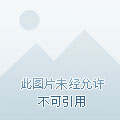
Professor Peng Huisheng of the Department of Polymer Sciences at Fudan University has recently had a sense of urgency.
Half a year ago, his team published the scientific research results of "Large-scale Construction of High-performance Fiber Lithium Batteries" in the international authoritative academic journal Nature, which was evaluated by reviewers as "milestones in the field of energy storage and wearable technology". With the breakthrough of "from 0 to 1", how to become a real productivity? It was the thing he had thought about the most in half a year.
Recently, this achievement was selected as one of the "Top Ten Advances in Chinese Science" in 2021. When the news came, Peng Huisheng's sense of urgency was even stronger, he told the Liberation Daily Shangguan News reporter that the United States specially established a "revolutionary fiber and textile research institute", bringing together the strength of well-known universities and enterprises in the United States and listing it as a national innovation direction; a strategy report of the European Union predicted that there will be a market of 2 trillion euros for electronic fabrics in the next 10 years, which will bring about a textile revolution.
Mainland research on fiber lithium-ion batteries is currently half ahead of the "body", but starting early in the morning, how can we not catch a late set?
[An adult shirt woven from a fiber lithium-ion battery that can charge the phone about 20 times at a time]
A piece of printed blue cloth that looks very ordinary, put the phone on, and it starts to charge automatically (see picture below). It turns out that this blue cloth is not ordinary, it is woven into the fiber lithium-ion battery developed by Peng Huisheng's team. This also means that you don't need to bring a charger when you go out, you can directly charge your phone wirelessly through the clothes you wear.
"An adult shirt woven from a fiber lithium-ion battery is the equivalent of a mobile power bank that can charge a smartphone about 20 times at a time." Peng Huisheng said.
Will wearing clothes to charge the mobile phone hurt the human body? "Our products are not only safe, washable, but also friendly to sensitive skin, and we are working towards being biodegradable in the future."
As early as 2008, Peng Huisheng's team began to study the new flexible battery system, and in 2013, it took the lead in proposing and realizing the new fiber lithium-ion battery internationally.
However, at that time, the mature production system for bulk lithium-ion batteries was difficult to directly use for fibrous lithium-ion batteries, and the preparation of fibrous lithium-ion batteries in the world was almost blank.
What to do? Only by knowing why it is so can we find a preparation method.
After 8 years of exploration, they found that the internal resistance of the fiber lithium-ion battery changes with the length of the law. Surprisingly, the internal resistance did not increase with the increase of the length of the battery, but gradually stabilized after first decreasing.
Under the guidance of this innovative theory, the fiber lithium-ion battery they built has excellent and stable performance, the energy density is increased by nearly 2 orders of magnitude compared with the past, and even if the fiber lithium-ion battery is bent 100,000 times, its capacity retention rate is still more than 80%. They also built the world's first fiber lithium-ion battery production line.
"In the past, the cost of making a shirt based on a fiber lithium-ion battery in the laboratory was astronomical, but now we have reduced the cost to hundreds of thousands of yuan, and it will be further reduced with the scale in the future." Peng Huisheng told the Liberation Daily Shangguan News reporter.
"To turn discovery into productivity, more industry collaborators are needed to join"]
In Peng Huisheng's office, there hangs a picture about a larger vision of fiber batteries.
Peng Huisheng is talking about the application prospects of fiber batteries. Photo by Huang Haihua
Fiber batteries have shown new possibilities in wearable devices, space exploration, biological medical devices, brain-computer interfaces and other fields. Take wearable devices, in recent years, "how to charge" has become a bottleneck problem restricting its development, and the emergence of fiber lithium-ion batteries has undoubtedly become one of the "keys" to crack this problem.
Traditional lithium-ion batteries are a "sandwich" structure, so it's hard to make small. It is revealed that Peng Huisheng's team initially wanted to overcome the fiber solar cell, but how to store the light energy into electrical energy is a problem, so they first set their sights on the fiber lithium-ion battery. Now, fiber lithium-ion batteries have made major breakthroughs, and they want to return to the research track of fiber solar cells. Solar energy is an inexhaustible and inexhaustible clean energy source, and it is also a good coping strategy to achieve the goal of "carbon peak carbon neutrality".
However, compared with the foreseeable market prospects of fiber batteries, the current product promotion speed is still too slow in Peng Huisheng's view. From the battery itself, there is still room for improvement in energy density; how to wear fabrics prepared by fiber batteries is more comfortable and more beautiful, and it is also worth exploring. The understanding and investment of this huge market also need to change in his view.
"Although we have achieved an original breakthrough in fiber lithium-ion batteries, foreign countries have been accelerating their follow-up, and if we want to turn the discovery into productivity, we need more industry partners to join." Peng Huisheng appealed.